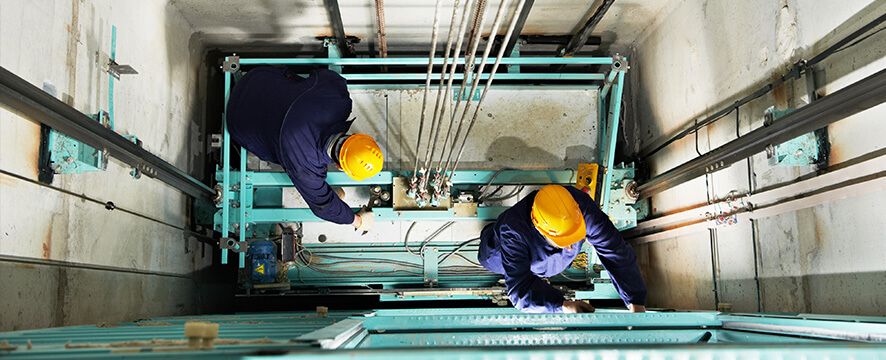Comprehensive Guide to Lift Equipments and Their Upkeep
Browsing the complex globe of lift systems and their upkeep is a task that demands accuracy and understanding. From the various types of lift systems in usage to the careful adherence to safety and security policies, the maintenance of these vertical transport devices is a complex endeavor.
Types of Lift Equipments
Elevator systems been available in numerous kinds, each created to match particular structure needs and user needs. The most typical kinds consist of hydraulic elevators, grip elevators, machine-room-less elevators, and vacuum lifts. Hydraulic lifts are ideal for low-rise buildings and utilize a hydraulic piston to move the lift vehicle. Traction lifts, on the various other hand, are extra suited for high-rise buildings and utilize steel ropes and counterweights to move the cars and truck. Machine-room-less lifts are a space-saving alternative as they do not require a separate machine room for the elevator machinery. Vacuum elevators, a more modern development, usage atmospheric pressure differentials to relocate the auto within a clear tube.
Each sort of elevator system has its own advantages and disadvantages, making it crucial for building owners and developers to very carefully consider their certain requirements before picking one of the most appropriate option. Factors such as constructing elevation, area availability, energy performance, and spending plan restrictions all play a considerable role in figuring out the most effective lift system for a certain structure.
Common Upkeep Problems
Regular maintenance of elevator systems is essential to guarantee smooth operation and prolong their lifespan. Despite normal maintenance, lift systems can still come across typical maintenance issues that need to be quickly addressed to prevent disruptions in solution. Routine assessments and positive maintenance can aid recognize and solve these typical upkeep problems before they escalate and influence the general performance of the lift system.
Safety And Security Laws and Compliance
Sticking to stringent safety and security guidelines and making sure compliance with sector requirements are critical for maintaining the functional integrity of lift systems. Elevators undergo a thorough collection of security regulations to guard travelers, upkeep employees, and the public. Regulative bodies such as the Occupational Security and Health Management (OSHA) in the United States and the European Lift Association (ELA) in Europe develop guidelines that cover numerous aspects of lift design, upkeep, operation, and installment.
Compliance with these laws is not just a legal demand yet also a moral responsibility for building owners and lift maintenance firms. Routine examinations, upkeep checks, and adherence to safety and security procedures detailed in use this link the guidelines Look At This are crucial to make sure the effective and secure operation of lift systems.
Ideal Practices for Maintenance

Another important ideal practice is to quickly address any noted problems or unusual noises to stop more damage. Executing a proactive strategy to upkeep can save time and money in the future by preventing costly fixings or substitutes. Building proprietors ought to also take into consideration purchasing modernization upgrades to enhance the performance and safety of their lift systems. By complying with these best methods, elevator systems can run smoothly and securely, offering trusted vertical transport for residents.

Advanced Technologies for Efficiency
Implementing innovative modern technologies in elevator systems can considerably improve functional performance and passenger experience. lift maintenance services. One of the vital improvements in lift innovation is the intro of location control systems. These systems enable travelers to input their preferred flooring before going into the elevator, which then directs them to one of the most efficient vehicle. By enhancing and minimizing unneeded stops travel courses, destination control systems minimize wait times and blockage in high-traffic structures.
Furthermore, the combination of wise sensors and predictive maintenance abilities has revolutionized elevator upkeep. These sensing units can discover potential problems before they see it here escalate, allowing aggressive upkeep interventions and decreasing downtime. Additionally, the use of regenerative drives and energy-efficient elements helps in reducing power usage and operating prices in elevator systems.
In addition, the execution of cloud-based monitoring and remote diagnostics permits real-time tracking of elevator efficiency and instant troubleshooting of any breakdowns. This proactive technique not just improves system dependability yet also enhances the general individual experience by ensuring undisturbed and smooth lift procedures.
Conclusion
In final thought, comprehending the various kinds of lift systems, common maintenance issues, security guidelines, ideal maintenance practices, and advanced technologies for effectiveness is vital for making certain the smooth procedure of lifts. By sticking to safety and security regulations and implementing best practices for upkeep, building owners can lengthen the life expectancy of their elevator systems and guarantee the security of passengers. It is essential to stay updated on the newest developments in elevator technology to improve efficiency and reliability.
The most usual kinds include hydraulic lifts, traction elevators, machine-room-less lifts, and vacuum cleaner lifts. Hydraulic elevators are perfect for low-rise buildings and use a hydraulic piston to relocate the elevator automobile. Machine-room-less elevators are a space-saving option as they do not call for a different maker space for the elevator machinery. Normal examinations and positive maintenance can help recognize and fix these common upkeep concerns before they rise and affect the overall efficiency of the lift system.
